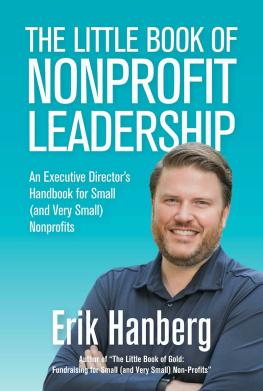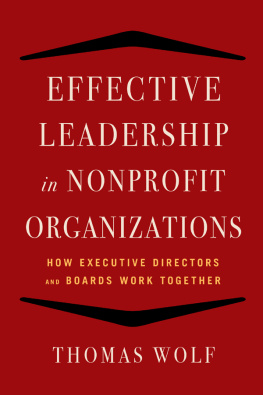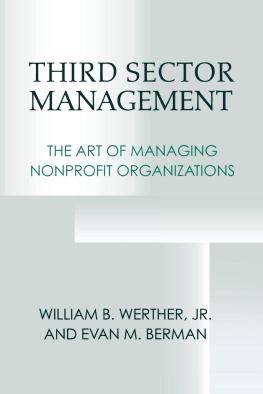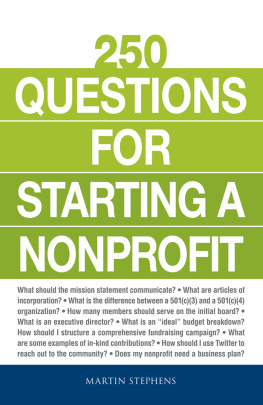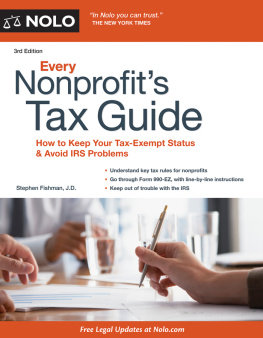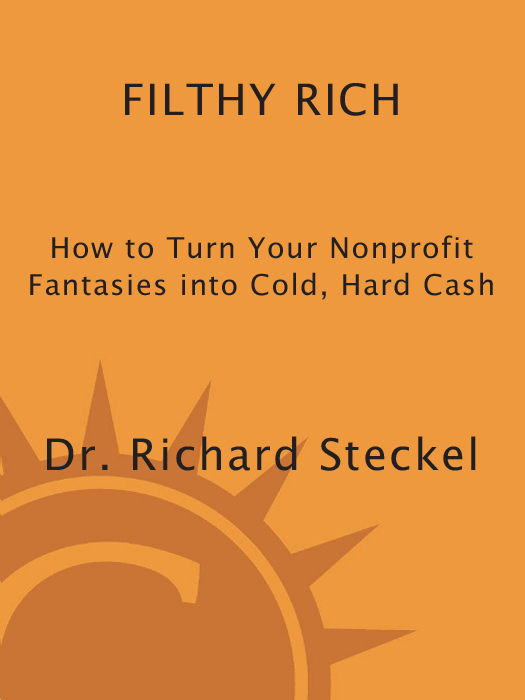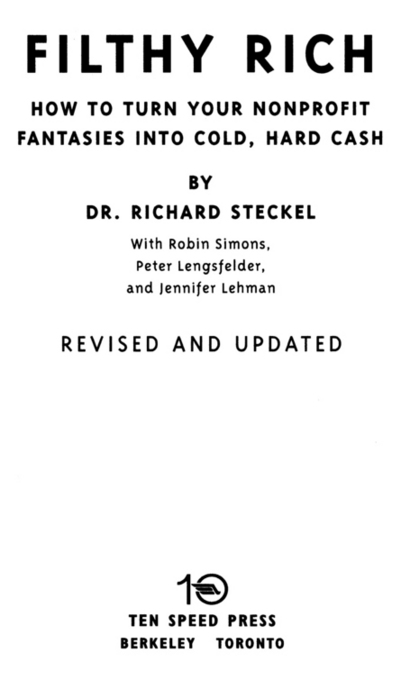Copyright 1989, 2000 by Dr. Richard Steckel
All rights reserved. No part of this book may be reproduced in any form, except for brief reviews, without the written permission of the publisher.

Ten Speed Press
P.O. Box 7123
Berkeley, California 94707
www.tenspeed.com
Distributed in Australia by Simon & Schuster Australia, in Canada by Ten Speed Press Canada, in New Zealand by Southern Publishers Group, in South Africa by Real Books, in Singapore and Malaysia by Berkeley Books, and in the United Kingdom and Europe by Airlift Book Company.
Lyrics to My Shoes 1986 by Richard Greene, Gunnar Madsen, and Mark Pritchard, Best of Breed Music-ASCAP. Reprinted by permission.
The Way You Do the Things You Do by William Robinson & Robert Rogers. 1964 by Jobete Music Co., Inc. Reprinted with permission.
Library of Congress Cataloging-in-Publication Data
Steckel, Richard.
Filthy rich: how to turn your nonprofit fantasies into cold, hard cash / by Richard Steckel; with Robin Simons, Peter Lengsfelder, and Jennifer Lehman.
p. cm.
Rev. ed. of: Filthy rich and other nonprofit fantasies. c1989.
eISBN: 978-0-307-76847-6
1. Nonprofit organizationsManagement. 2. Nonprofit organizationsFinance. I. Title.
HD62.6 .S74 2001
658.048dc21 00-051146
v3.1
To S HELLI , R OBIN , W ILL , T RACI , J EFF , J ILL , H ENRY,
AND THE OTHER MOST PRECIOUS CHILDREN ON EARTH:
T AYLOR , C ONOR , A IDAN , S UTTON, AND M ADELEINE .
L EON AND S ARAH, PERPETUAL TEENAGERS .
K ITTY, ALWAYS THERE .
TO J OAN L ENGSFELDER AND C ARL L OWENSTEIN,
THOSE ETERNALLY YOUTHFUL SPIRITS .
TO S YLVIA , B OB , H ALLIE, AND T HURBER, FOREVER .
TO ZACH, WHOM I WILL ALWAYS CHERISH .
CONTENTS
PREFACE
THE WINDS OF CHANGE ALWAYS SEEM TO BE BLOWING IN THE SAME DIRECTION
New decade, new millennium, same story. The hundreds of thousands of nonprofit organizations that continue to form or continue to serve customers see the same writing on the wall: Be very careful how much you depend on traditional sources of funding. The more you depend on somebody somewhere to give you money, the more vulnerable you will be to the winds of change. Foundation leadership changes, corporate ownership changes, and the cause-du-jour will always change (just five years after the potential devastation of the AIDS epidemic was understood by a majority of Americans, activist and Hollywood icon Elizabeth Taylor bemoaned the apparent reality that the AIDS causeprevention education, treatment, and the investment in research to find a curehad become pass).
So, where does that leave you? Are you ready to upset the apple cart in your organization and make enterprise a central feature of your operation? We find that many experienced leaders in the nonprofit sector still dont know how to make earned income ventures and partnerships real in their organizations.
Remember, if this is new to you, you are not alone.
When Filthy Rich was first published, the idea of nonprofit organizations earning income through enterprise ventures was a very new idea. Today, thousands of nonprofits sustain their operations with significant contributions from their earned income activities and from profits generated from partnerships with corporations. However, that doesnt mean that this orientation comes naturally to nonprofit managers.
We still, generally speaking, use language that separates the private, public, and third or nonprofit sectors. Corporations, government entities and nonprofits are defined as different beasts with fundamentally different objectives. Thats what we mean when we say that the winds of change still seem to be blowing in the same direction. Every new technology, every new privatization of government initiative, every new joint venture still leaves the nonprofit sector feeling like the poor stepchild of efforts designed for the primary purpose of making money.
So, Filthy Rich continues to serve a very important purpose: The leaders of nonprofits all over the world need the tools to know how to make enterprise a vital part of their organizational present and future. Grants, membership programs, donor appealsthese strategies for generating your budgets are all still vulnerable to the game of whos-popular-now. You need the know-how to take a great money-making concept and make it real.
And, you need the tools to make your idea really appealing. We hope that Filthy Rich will give you the confidence as well as the game plan to reap the benefits of becoming a truly enterprising nonprofit.
PART I
NONPROFIT ENTERPRISE: WHO SAYS YOU CANT FANTASIZE?

CHAPTER 1
CHANGING THE WAY YOU DO BUSINESS
The trouble with being poor is that it takes up all your time.
WILLIAM DE KOONING, ARTIST
This book is about changing your nonprofit organization from a poor, grant-dependent, sand-kicked-in-your-face operation into one that is muscular and self-reliant. It is about paying your own way with earned income ventures, and about using those ventures to improve the delivery of your mission.
This book is also about changing the skinny way you think. For too long, nonprofits have been bound by assumptions that limit their effectiveness. No more. A new class of nonprofits has developed, with muscular attitudes and behaviors borrowed from the private sector. The private sector provides some excellent role modelsjust because theyre brawny doesnt mean theyre bad guys! So lets throw out your tacit tongue tssks right now.
Well show you how to develop an entrepreneurial nonprofit, one that is goal- and customer-oriented. You will learn how to shape a strong, practical vision. You will see for yourself that your nonprofit can be innovative, risk-taking, and solvent; ventures will earn you predictable and unrestricted operating income. Above all, this book will help you sell your missionto broader audiences than youve ever dreamed.
LICENSE TO DREAM
Look what other people have dreamed up over the past few years, eBay. Jesse Ventura. Palm Pilots. Britney Spears belly button! We all got here, to this improbable place of other peoples fantasies, through marketing. Still, so many important issues go unresolved while people are out walking their pet Guccis. Nonprofits, especially, seem to be having a hard time being heard.
Why?
Because your fantasy has been weighted down by the seriousness of your mission; your fantasy has taken a bum rap. Some people talk about fantasy as if it were an outdated concept, maybe even a dangerous one, as if it distracts you from reality. Quit daydreaming, they say. Come down to Earth. Get on with business.
In fact, fantasy has lots to do with businessespecially yours. Imagining is the business of nonprofits. It is the imagination that sees a more equitable, more productive world. It is the first step toward creating change. How else are we going to feed the hungry? Or cure the sick? Shelter the homeless? Retrain troubled youth? Assist the disabled? Prevent crime? Nonprofits know all about fantasy. Thats where their goals begin.
THE END AT THE BEGINNING




